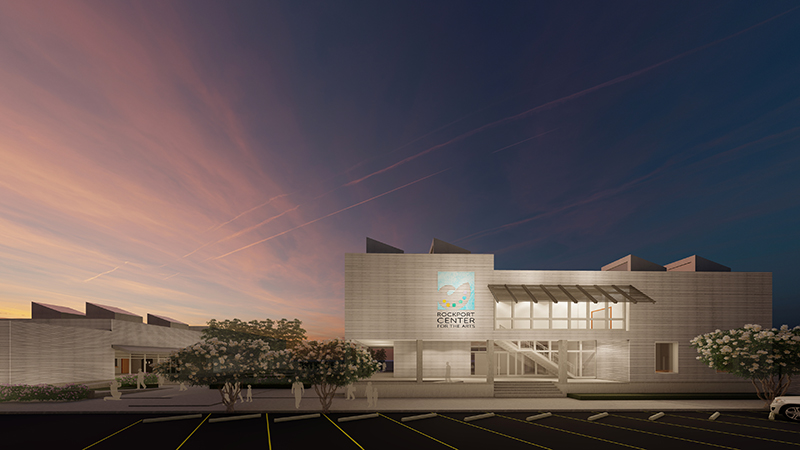Richter Architects-Designed Rockport Center for the Arts Breaks Ground
On August 25, 2017, communities along the Gulf Coast were forever changed by the devastating effects of Hurricane Harvey. The category four storm made landfall in Aransas County, where winds up to 132 mph damaged nearly every structure in sight — including the beloved Rockport Center for the Arts (RCA). The historic structure, which had housed RCA since the 1980s, was deemed a total loss, along with a significant portion of the 2-D exhibits on display at the time, which were on loan from other museums. This came as a blow not only to the museums’ patrons, but to the entire Rockport community, as the RCA had acted as a nexus for engagement to so many permanent and semi-permanent residents.
Under the guidance of Executive Director Luis Puron, RCA transitioned to rented space, then into a 200-sf historical building owned and restored by the museum, where it continued to operate during the aftermath of the storm through the end of 2019. Puron was not prepared to let RCA’s ambitious agenda — which includes 27 yearly exhibitions, a film festival, art workshops, an art festival, and an art fair — fall to the wayside during what was already a difficult time. In fact, when the hurricane prevented the museum from accepting the national traveling show “Birds in Art,” which was set to arrive a week after the storm, RCA networked with the Art Museum of South Texas to host and open the exhibit on September 28, 2017, just two weeks after the initial planned launch date. More than 16,000 people viewed it. “I credit that transitional moment in our history as the Renaissance for art in Rockport,” says Puron. Within a few months, the board of directors had launched a large capital campaign to raise funds for the construction of a new, multifunctional facility.
Now, nearly four years later, RCA has broken ground on a resilient new facility designed by Richter Architects of Corpus Christi. The firm’s design includes a 13,000-sf visual arts and art education complex; an 8,000-sf performing arts facility and conference center containing a culinary arts education kitchen and multiple meeting rooms; and a 16,000-sf outdoor sculpture garden that will display 3-D works from RCA’s impressive permanent collection — a collection that was, thankfully, salvageable after Harvey.
The design proposes clapboard siding similar to that used on coastal precedents; however, the new structure is reinforced with concrete block, concrete columns, and an immensely deep foundation to protect against future storms. The building remains respectful of Rockport’s low profile by packing RCA’s myriad programs into a series of interconnected one- and two-story volumes. “Our goal is to create an arts enclave that is both strong and inviting,” says Elizabeth Chu Richter, FAIA. The team paid careful attention to how the sculpture garden, which will be home to arguably the most valuable elements of the collection, engages with the street and welcomes passersby. Over a dozen northern-facing sawtooth roof monitors direct the eye upward to the various balconies and rooftop terraces connecting the project and filter light into the galleries and classroom spaces.
RCA has expanded its reach immensely since its humble beginnings in 1969. What was then a group of local artists looking to create a place where their works could be exhibited is now a buzzing community hub full of opportunities to engage with, create, learn about, and immerse oneself in art. Come summer 2022, the Rockport community will have a proper unified home in which visitors can do all these things.
Sophie Aliece Hollis is TA’s editorial assistant.
Also from this issue









